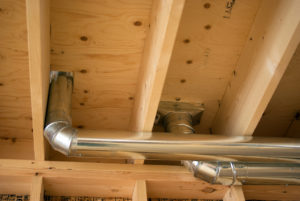[…]]]>
 You don’t expect your heating system to produce any kind of strange odors when it’s running normally, so it’s understandably worrisome if you notice an odd smell when you turn on the heater for the first time this year. To help you determine if there’s a cause for concern, here are some of the most common heating odors that occur and what they mean.
You don’t expect your heating system to produce any kind of strange odors when it’s running normally, so it’s understandably worrisome if you notice an odd smell when you turn on the heater for the first time this year. To help you determine if there’s a cause for concern, here are some of the most common heating odors that occur and what they mean.
Cooking Dust
Dust particles are bound to settle inside your heater when it’s not in use, so it’s not unusual to get this kind of funny odor when the unit is first turned on for the season. After a few days of using the heating system, this collected dust normally burns away and the smell dissipates. If it doesn’t disappear, you may need to schedule a professional heating system cleaning.
Dirty Socks
If you get a stale, dirty-sock smell when the blower is running, it may be due to mold or bacterial growth on the air filter or indoor evaporator coil. Putting in a fresh air filter may be all that’s needed to get rid of the stench, but if it persists, have your HVAC pro visit to inspect and sanitize the coil.
Sulfur or Rotten Eggs
The scent of sulfur or rotten eggs originating anywhere near your furnace is a clear warning of a dangerous leak in the gas valve or lines. If you notice this distinctive odor, there’s a real risk of a fire or explosion, so call your HVAC contractor immediately, and for safety, turn off the system and get everyone out of the house until the leak source is found and fixed.
Burnt Wiring
If you smell an acrid scent of burnt wiring around your furnace or coming from the registers when you turn on the heater, it points to a problem with your HVAC system’s electrical components or motors. Contact your HVAC company right away, so a trained technician can locate the cause and make needed repairs to eliminate a fire hazard.
If you need expert help identifying and correcting odd heating odors in your Yuma home, contact us today at Hansberger Refrigeration and Electric Company.
Our goal is to help educate our customers in Yuma, Arizona about energy and home comfort issues (specific to HVAC systems). For more information about other HVAC topics, download our free Home Comfort Guide or call us at 928-723-3183.
]]>[…]]]>
 Your home’s ductwork plays a fundamental role in delivering conditioned air from your forced-air heating and cooling system. Ductwork is the circulatory network of your HVAC system, and it can’t do an optimum job unless it has been installed and designed correctly, and is well sealed against leaks. Following are some key aspects of proper duct design and maintenance:
Your home’s ductwork plays a fundamental role in delivering conditioned air from your forced-air heating and cooling system. Ductwork is the circulatory network of your HVAC system, and it can’t do an optimum job unless it has been installed and designed correctly, and is well sealed against leaks. Following are some key aspects of proper duct design and maintenance:
- As much as possible, ducts should run through areas that receive heating and cooling. Otherwise, cold or hot air in unconditioned areas can dilute the conditioned air that’s routed through your ductwork and conditioned air will leak into areas where it won’t serve any purpose. That’s the case with supply ducts that deliver warmed or cooled air to rooms in your house. With return ducts, on the other hand, when they run through unconditioned areas such as a crawl space, attic or garage, dirty air in those areas can infiltrate the ducts and get into your household air. If you can’t avoid routing ducts through these areas, make sure they’re properly insulated and sealed.
- Make sure the ductwork is professionally installed, and manufactured from sturdy, durable materials. Check that the contractor is certified to work with ductwork, and if he suggests routing air through wall voids instead of actual ducts, call a timeout. Metal screws and mastic sealant should be used to connect duct sections, and standard duct tape should NOT be used for sealing or connecting ducts.
- Airflow should be balanced, with about the same amount of air coming through supply ducts as going into return ducts. If there’s a noticeable pressure differential, conditioned air will escape through cracks and gaps in the home’s walls, or outside air will rush in the same way.
- Ideally, any room that has a supply air register should have a return register, too. However, if this isn’t possible, there should be an easy way for air to move between rooms, such as with “pass-through” grilles in doors or jumper ducts in ceilings.
For more information on proper duct design in your Yuma area home, please contact us at Hansberger Refrigeration and Electric Company.
Our goal is to help educate our customers in Yuma, Arizona about energy and home comfort issues (specific to HVAC systems). For more information about ductwork design and other HVAC topics, download our free Home Comfort Guide or call us at 928-723-3183.
Credit/Copyright Attribution: “mtkang/Shutterstock”
]]>